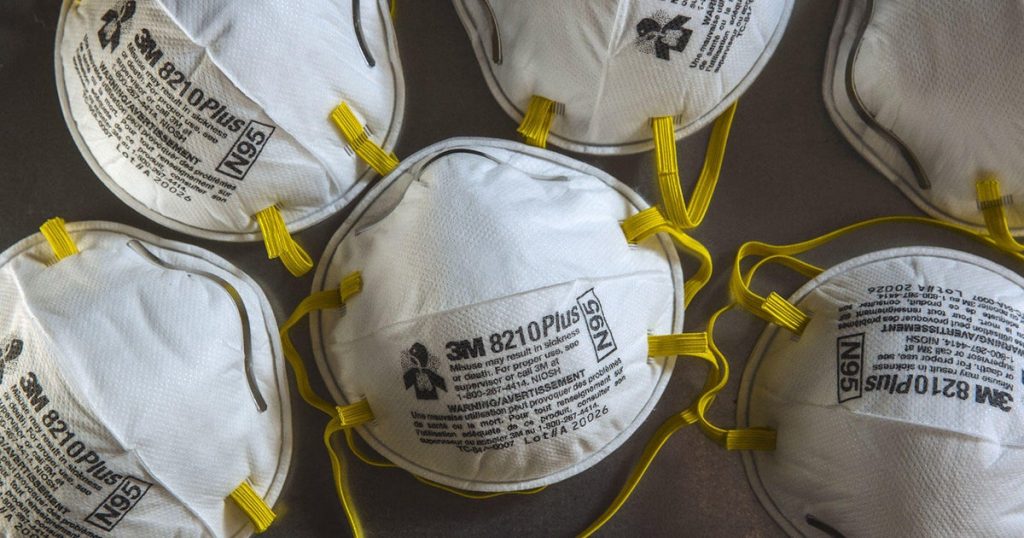In a significant blow to public health initiatives, nearly all remaining staff at the National Institute of Occupational Safety and Health (NIOSH) were laid off on Friday. The layoffs, ordered by Health and Human Services Secretary Robert F. Kennedy Jr., have left vital programs, including those related to safety equipment approval and firefighter health, on the brink of collapse. Initial layoffs had already stalled key operations, but the recent cuts signify an expansive curtailment of NIOSH’s ability to ensure workplace safety in various sectors.
| Article Subheadings |
|---|
| 1) Overview of the Layoffs and Their Implications |
| 2) Impact on Key NIOSH Programs |
| 3) Response from Affected Employees and Stakeholders |
| 4) Future of Workplace Safety Initiatives |
| 5) Conclusion and Call to Action |
Overview of the Layoffs and Their Implications
The recent layoffs at NIOSH mark a drastic reduction in resources dedicated to occupational health and safety. Nearly all staff were let go, a decision that has widespread repercussions not only for ongoing projects but for long-term public health strategies. This round of layoffs follows a prior wave of reductions and highlights the ongoing instability within the agency. The repercussions of these layoffs extend beyond the immediate loss of personnel; they disrupt critical safety initiatives in various industries, jeopardizing public health at large.
Impact on Key NIOSH Programs
NIOSH is responsible for a variety of programs essential to workplace safety, including the approval of new safety equipment and the health of firefighters. The layoffs have essentially halted all new requests for investigations into firefighter injuries and general workplace health hazards. Additionally, ongoing projects, such as a CDC plan aimed at reducing measles outbreaks in Texas schools, have been scrapped as a direct result of staff reductions.
Program managers, especially those focused on the World Trade Center Health Program and miner safety, expressed grave concerns over the halt in operations necessary to maintain compliance with safety protocols. Other programs, such as the National Personal Protective Technology Laboratory, which oversees the approval of safety gear like N95 masks, are also affected. As of now, around 100 applications for personal protective equipment remain in limbo, unable to progress due to the staffing crisis.
Response from Affected Employees and Stakeholders
The response from employees who received layoff notices has been one of dismay and concern for the future of workplace safety. Affected staff members have indicated that the layoffs were communicated in a manner similar to previous cuts, categorizing their roles as “unnecessary.” In letters shared by laid-off employees, they stressed the impact this situation will have on the safety standards that millions of workers depend on across various sectors, including healthcare and emergency services.
“Millions of workers across various sectors depend on NIOSH-approved respirators. Without these approvals, their safety is compromised, leading to potential illness, injury, or even death,”
the letter stated, encapsulating the anxiety felt by employees whose roles were pivotal in ensuring the safety protocols of many essential sectors.
Future of Workplace Safety Initiatives
The implications of these layoffs raise questions about the future viability of workplace safety initiatives. With nearly all teams disbanded, critical tasks—such as vetting safety equipment and responding to health emergencies—are now at a standstill. To compound the problem, the agency is unable to issue refunds for application fees paid by manufacturers, and there are no certified equipment or standards to meet new National Fire Protection Association requirements.
The overall atmosphere at NIOSH is one of uncertainty as it grapples with these extensive cuts. With no official comments from Health and Human Services following the layoffs, stakeholders are left in the dark, highlighting the urgent need for public health advocacy to restore operational integrity to the agency.
Conclusion and Call to Action
As the effectiveness of NIOSH dwindles, stakeholders in various sectors are urged to advocate for the restoration of essential services. The affected workers, healthcare professionals, and safety advocates need to rally together to push for a reevaluation of these drastic cuts. Without a robust agency to oversee safety standards, America’s working population may face dire consequences encompassing not only occupational health but also broader public health impacts.
| No. | Key Points |
|---|---|
| 1 | NIOSH experienced massive layoffs affecting nearly all of its remaining staff. |
| 2 | Essential programs aimed at workplace safety have been brought to a standstill. |
| 3 | Affected employees voiced serious concerns over the implications for public health. |
| 4 | Urgent advocacy for restoring vital NIOSH services is needed to protect workers. |
| 5 | The future of safety equipment approvals remains uncertain. |
Summary
The layoffs at NIOSH represent a significant escalation in the challenges facing workplace safety initiatives. As the agency grapples with operational paralysis due to staffing shortages, the implications for public health are profound. Immediate action and advocacy are required to rectify this situation and ensure the safety of American workers across various sectors.
Frequently Asked Questions
Question: What is NIOSH’s primary role?
NIOSH’s main responsibility is to ensure safe and healthy working conditions by conducting research and making recommendations for the prevention of work-related injuries and illnesses.
Question: Why are safety equipment approvals important?
Approval ensures that safety equipment such as respirators meets necessary health standards, thereby protecting workers from hazards in their environments.
Question: How can affected employees respond to layoffs?
Affected employees can advocate for their reinstatement by lobbying for changes through public health campaigns and collaboration with stakeholders who prioritize workplace safety.


